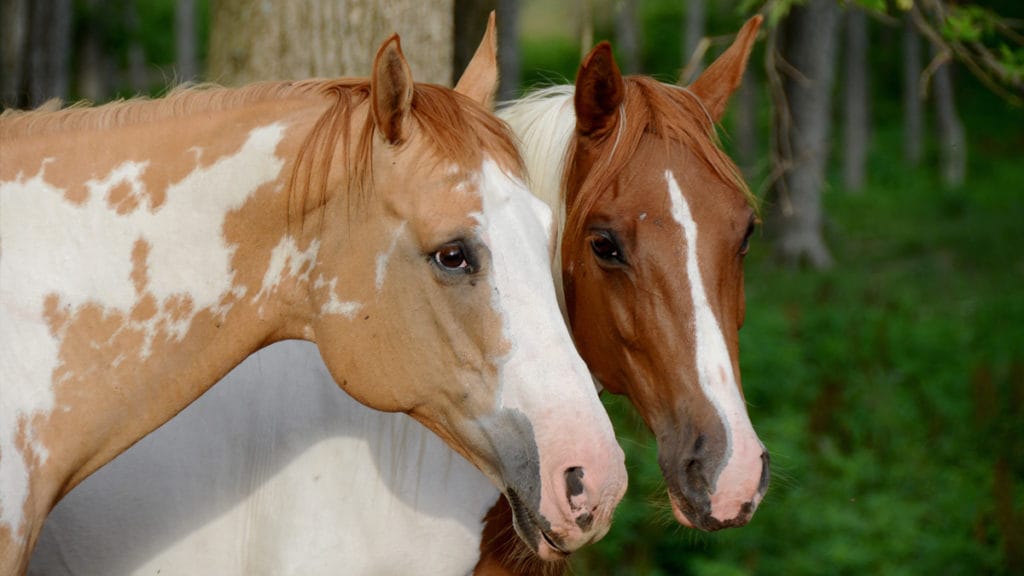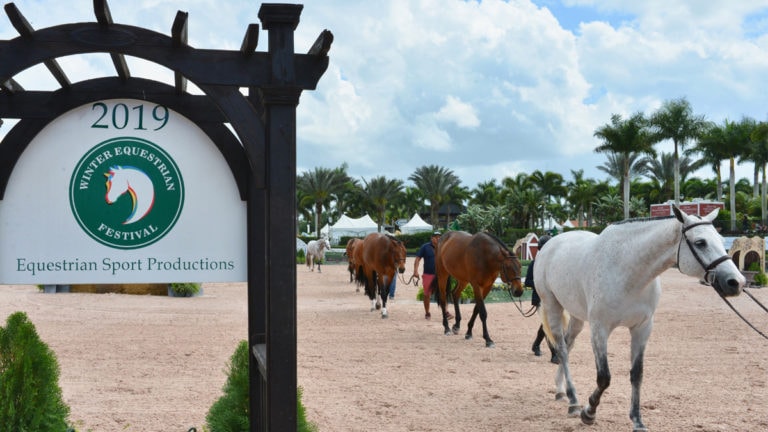Though horses don’t “sit” on command, and most aren’t up for a game of daily fetch, proper horse training can turn a 1,200-pound animal into a devoted companion and teammate. Learning how to train a horse is a long-term process that takes persistence, patience and often years to learn, but the multitude of horse training methods available for specific horseback riding disciplines can turn an unbroke horse into a loyal and willing partner. It can seem overwhelming, but we’ll go over the basics and show you where to start.
Start by building a relationship.
Whether you are working with a young, unhandled horse or a seasoned 16-year-old trail horse, any level of horse training starts with a relationship. “Building a relationship with a horse is just as complicated and easy to break as it is with humans,” explains Amy DuKate, head coach of the Indiana University Equestrian Team, barn manager and horseback riding instructor at Crimson Stables in Bloomington, IN. “Have patience, and come in with an open mind. If you get frustrated, you can potentially take ten steps back before taking one forward again. There is a lot of compromise and question asking when it comes to building a relationship with your horse, but once established, that bond is beyond comparable to anything else.”
When it comes to horse training, most horses are very willing to learn and seek direction. By building a relationship before you start horseback riding your new mount, you establish a level of trust and teach your horse to seek your guidance. “Horses need leadership,” says DuKate. “Show them what they are capable of, and they will give you their all. Show them what they do wrong all the time, and they will shut down.” By making each training a positive and sequential experience, you teach your horse what is expected of them and provide them with instructions for how to achieve it. For example, before asking your horse to cross a river in the forest preserve, ask him to cross a puddle at home. By taking steps in a simple order, you begin to build a foundation and set your horse up for success.
How do you build a relationship with a horse?
When introduced to a new horse, “Start by learning their likes and dislikes—where their sweet spots are—by spending time with them outside of work and training,” suggests DuKate. “Every horse has their own personality, and it’s your job to figure it out.” From tacking the horse up for horseback riding, to carrying out the daily tasks involved in caring for the horse, spending time with him outside of horse training will make your time in the saddle much more productive. Bring a Horsemen’s Pride Mega Ball Horse Ball out to the pasture to play with your horse. Or hang a Horsemen’s Pride Jolly Ball Horse Ball up in his stall, and show him how to use it. By spending relaxed time together, you make him more comfortable and build trust by showing him that there’s more to your relationship than just work.
Wondering how to train a horse?
Much of horse training is a mental practice. “Learning to train takes years and years of experience and learning. It is important to understand that every horse learns differently, so come to the table with an open mind,” explains DuKate. To effectively train a horse, “You must be able to problem solve and take your time to figure out what works for your horse, because how you train one may not be how you train another. The key to learning the art of training is to keep educating yourself. Read books, attend clinics, take lessons and never stop learning.”
Most importantly, end each training session on a positive note. Reward your horse when he does what you ask him to with a simple rub on the neck or treats, like Stud Muffins Horse Treats or Mrs. Pastures Horse Cookies. This will grow his confidence and allow you to build on the basics. “I love ending my sessions with stretches that incorporate treats,” adds DuKate. “Not only is the stretching good after a workout, but the treats are a perk on top of it all.”
Horse training takes time, patience and dedication. Most of the people who choose to professionally care for and train horses, dedicate their lives and lifestyles to it. Though not for everyone, working with a professional trainer will allow you to gain experience riding horses to see if training might be for you.
Looking for a name for your new horse? Check out our list of top horse names.
Share:













